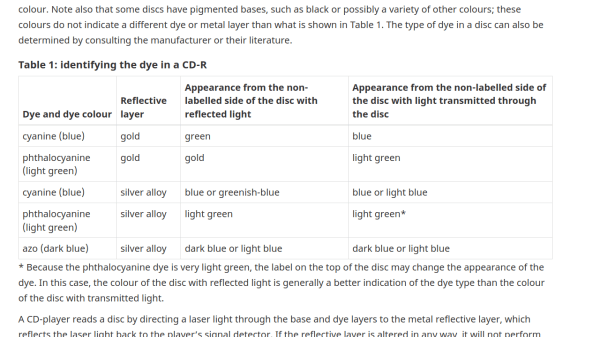Picking a storage medium for data preservation can be a conflicting time. Sure, they say optical storage tends to last, but it can’t be as straightforward as just burning everything onto Blu-Rays, right? Here’s a paper from Canadian Conservation Institute, teaching you the basics of using compact disks for data storage, it appears, without missing a single detail, and taking about ten minutes to read.
Here, you will learn about the different kinds of disks available and how their manufacturing-inherent qualities affect their preservation capabilities. Are dual-layer DVDs better than single-layer ones, or is it the opposite? How do CDs compare? And what about Blu-Ray disks? Wonder no more, here you will get answers to questions you didn’t known to ask. Data preservation is a game of numbers to preserve numbers, and this paper also outlines how to properly record, store, and test your disks to raise your chances.
Whether you’re only looking to delve into data preservation, or trying to improve your own policies, this looks like is a perfect document for you. After all, if you’re not aware of the best practices, you might end up having to digitize old floppies or even LaserDisks – not that those aren’t fun journeys to read about, of course, and we recommend it. Data preservation isn’t just about optical disks, of course – it’s a practice with a rich history.


















